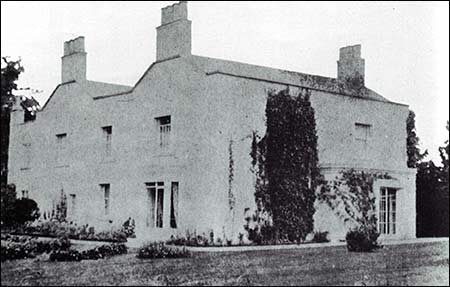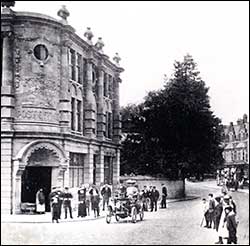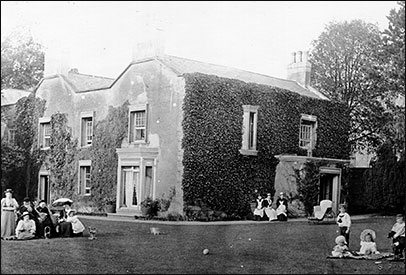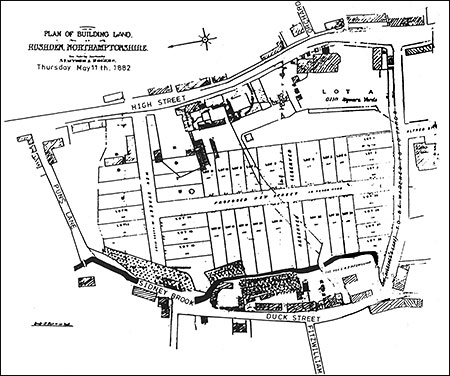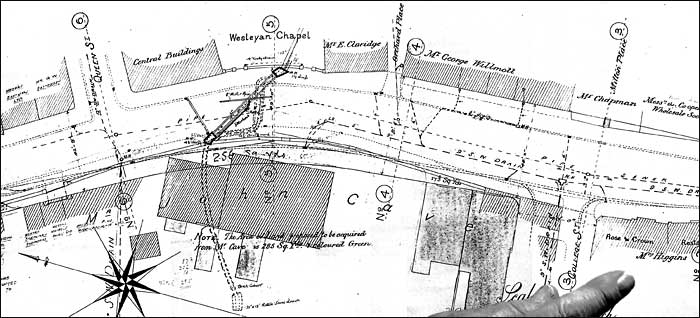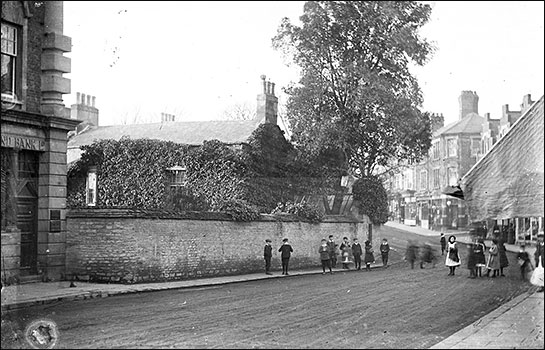|
|
||||||||
|
Rushden Cottage
|
||||||||
|
The story - put together from a number of sources and some possibilities! |
||||||||
|
||||||||
|
When I visited Mrs Ripley she used to say the Sartoris children (her and brother Hugh) used to visit Rushden Cottage to see the Campbell-Praeds, and she had a photograph of Rushden Cottage in the family Album. They would travel from the Hall by carriage — they were not allowed to walk there. The High Street would have been considered a bit rough and would have still been a lane, no hard surface, dry in summer and a muddy track in the winter. It is very difficult to be precise without 'printed' dates; some we have! Rushden must have been in a fever of activity with possible house and factory building. I think the 'Gentry' would not have mixed with the 'Manufacturers' — most of whom were self-made men — Clicker to Master in one generation! The confusion arises when Mrs Ripley talked of visiting ‘The Cottage' as children to see the Campbell-Praeds who lived there (the seventeenth century building) which was later demolished to be replaced by a new building, on the same site, and re-named 'Rushden Cottage.' This later building is authenticated by a superb photograph of the Cave family and their servants 'suitably arranged for the photograph.' |
||||||||
|
||||||||
Here one can speculate as to who did the building — Campbell-Praeds or Caves? Since Cottage No.2 was in Mrs Ripley's photograph album I think Campbell-Praeds lived there for a time — but as the builder or as a tenant is open to speculation. I think it is sometimes difficult to realise how quickly buildings can be both destroyed and new ones erected; we think now that buildings 'go up like mushrooms' but when you consider the size and complexity of a new 'Shoe Factory' such as John Caves huge factory in the developing High Street, to build, a new residence like Rushden Cottage No 2 would not take long to erect and it did contain a dated over-mantle from an earlier building. The Victorian age was a period of great change and industrialisation. I often look at the Parish church and wonder how beautiful it would have appeared in its rural setting, not hemmed in by other buildings, Charles Leaver's picture of 1876 is a fortunate record. Having lived in Rushden all my life (except for 6 months) it is something of a shock to realise that many of the fields and rural settings I knew have gone forever under the Housing, Industrial Estates and road systems we take for granted; it must have been the same 120 years ago, much that had existed for centuries was swept away in the name of progress. Depending on your point of view land for development is seen as a good thing or regrettable, now it seems to be developers who purchase land, obviously with an eye to 'build', the ownership of land is a subject of its own, sufficient to say in the 1800's most of the land belonged to the 'Gentry' and in the case of our neighbour Higham Ferrers much of the town as well, all part of the Fitzwilliam Estate before their Grand Sale of 1914. Rushden Cottage appears to have been a considerable 'Gentleman's residence', not as large as Rushden Hall with a smaller 'park' but ideal for renting to those with sufficient means, purchased from a Mrs Fletcher in the early 1800's (surely must be connected with Rushden Hall — but the Fletchers have always been a bit of a mystery) it was the property of the Hon C.W.W. Fitzwilliam, M.P. and could have been used originally by him to be near his substantial holdings in Higham Ferrers. Rushden Cottage would have been more commodious than anything in the ancient Borough and, as it appears, was readily let on a regular basis. The exact position is not known but could well have been on the same spot where Rushden Cottage 2 was built, almost as large as Rushden Hall (with thirteen Bed and principal rooms, extensive stabling and two Coach Houses) about four acres of land extending to Duck Street on the west. It was a substantial property, and was furnished with all you would expect, dining chairs, beds (a handsome brass half-tester), soft furnishings, Turkey, Brussels and other carpets; all a family needed for a comfortable living. The first known tenant or possibly owner of the Cottage was Mr & Mrs John Tunnard in 1836, a family connected to the Rector, the Rev George Downe who married Elizabeth Tunnard in December that year. In 1871 it was ‘To Be Let' and Henry William Currie appears. Mr Currie built Rushden House in 1871 and may have lived in the Cottage while his own house was being built. Mr Currie also built a row of seven Cottages opposite the Compass Inn, but unfortunately the date stone on them was not recorded when they were demolished. It seems likely that Mr Campbell Praed was the next tenant, who was certainly there between 1878 and 1882, and still in residence when the Hon C. W. Fitzwilliam, M.P., put the entire property up for sale by auction on Thursday May 11th 1882 allowing the tenant, Mr Campbell Praed until Michaelmas (September 29th) to vacate the property. One hopes there were amicable agreements between the tenant and landlord. The contents were not sold until Thursday September 7th 1882 and since the contents were on view the day before the Sale one assumes Mr Campbell Praed had four months to find alternative accommodation. Whilst the 'contents' are very interesting 'the additional items' even more so! 112 DOZEN OF WINES — one assumes these were stock and belonged to Mr Campbell Praed since by the time of the sale the new owner of Rushden Cottage, Mr John Cave, a founder of the Temperance Movement and a pillar of the Baptist Church would certainly want this 'Devil's brew' off the premises. Besides the wine, two cottages in Duck Street were also sold for Mr Campbell Praed so it appears to have been an amicable arrangement. I have always assumed that Mr Campbell Praed was the same family as Campbell Praeds Brewery in Wellingborough but have no idea of a residence there. In conclusion the original Rushden Cottage owned by the Fitzwilliam Estate for most of the eighteenth century was an attractive and substantial building of limestone, perhaps with a Collyweston tiled roof. We have no way of knowing if there were any notable interior fittings, only the oak over-mantle reused in the new building, I think it must be assumed that Mr John Cave purchased the property and had it demolished, building a new house on the site. In due course it provided him with the necessary land to build a new factory after the destruction of the High Street factory in Caves second fire in 1901. I am very grateful to have received the photograph of the original Rushden Cottage; it was given to me when the Rotary Club were compiling the Rushden Book in 1979 by a member of the Cave family with the comment that 'we were always told this was the original Cottage', on the reverse it has 'Mrs Amos Cave - 2" oak' — presumably instructions for framing. Since the Rotary Committee already had an authenticated picture of the Cottage it was decided not to use the older one, in retrospect a pity I think but at least we still have it. |
||||||||
|
||||||||
